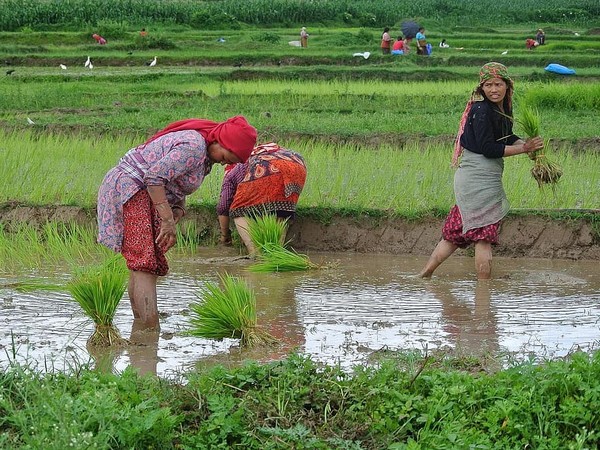
Kathmandu: Nepal marked Ropain Diwas or "Ashar Pandhra (15)" all across the nation on Saturday, planting paddy saplings on the terraced farms, celebrating the rice and rituals which have been followed for ages.
Soaking in mud and water, farmers continuously worked on the field levelling the mud to ensure an even level and continuous flow of water, creating a favourable typography for the paddy saplings to grow.
The plantation of paddy saplings in the field known as "Ropain" brings on high significance for farmers in Nepal which is primarily dominant during monsoon season, starting from June and will last for four months.
"Celebration of Ashar 15 has been followed for ages, passed from one generation to the other. It has been celebrated as a day of jubilance since childhood and we plant the paddy saplings on our field. This year we ran late in transplanting the saplings in lack of enough water and sparse rainfall," Meera Magar, one of the farmers in Lalitpur told ANI.
While planting the saplings, farmers run behind each other smearing mud on faces and splashing muddy water as a means of fun.
These sorts of activities are seen high in the Himalayan Nation on 15 of Ashar which has been marked as National Paddy Day since 2005 which earlier has been marked as day to indicate start of cultivation season with the start of monsoon.
As farmers gather, a feast is thrown which includes beaten rice, curd, pickle and homemade brew.
Moreover, because of this long-run tradition of having victuals, the Ashar-15 is also known as "Dahi (Curd)- Chiura (Beaten-rice)" eating day.
In Nepal, the paddy is cultivated from the height of 60 m above sea level in Terai to 3000 meters of the hills of Jumla's Chhumchaur.
Nepal annually produces about 5.5 million metric tonnes of paddy while the consumption stands at 7 million metric tonnes. Last year Nepal produced a total of 5.55 million metric tonnes from 1.45 million hectares of land.